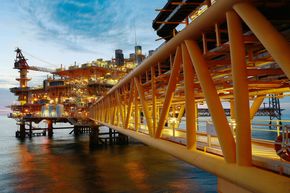- January 18, 2025
- Posted by: Velosi Author
- Categories: Asset Integrity, Insights

Introduction: Mastering Dead-Leg Management in Oil and Gas Pipelines
In the oil and gas industry, keeping the pipeline efficient and safe is essential. Among the many operational problems, dead legs within pipelines are not considered a priority until they cause major operational concerns. These stagnant sections can lead to corrosion, contamination, reduced flow efficiency, and regulatory non-compliance. It is important to identify the crucial aspects of dead-leg management to focus on risk mitigation, detection methods, and the role of advanced tools like Velosi’s VAIL-Plant® software in ensuring compliance and pipeline integrity.
What is a Dead Leg in Pipelines?
A “dead leg” in a pipeline refers to sections with minimal or no fluid flow. These areas can arise from design modifications, unused branches, or operational changes. Examples include capped ends, blind flanges, or bypass lines in oil and gas pipeline systems. Dead legs are common in upstream, midstream, and downstream operations, where complex piping networks are essential for production and transport. Effective dead-leg management ensures these zones do not compromise operational efficiency or safety.
Why Are Dead Legs a Critical Concern in Oil and Gas?
Risks Associated with Dead Legs:
- Corrosion and Material Degradation: In stagnant sections, water and corrosive substances accelerate localized corrosion, compromising pipeline integrity.
- Contamination Risks: Dead legs can introduce microbial activity, contaminating crude oil, natural gas, or refined products.
- Flow Inefficiency: Stagnation disrupts flow dynamics, causing blockages and pressure drops that obstruct ongoing operations system performance.
Compliance and Regulatory Challenges
Oil and gas operators must adhere to important standards like API 570 and API 574 and emphasize proactive inspections and maintenance. Dead-leg management ensures pipelines meet these regulations, avoiding penalties, operational delays, and potential environmental hazards.
Stages of Dead-Leg Management
Classification of Dead Legs:
- Permanent or Physical Dead Legs: Sections permanently isolated from flow due to design or operational needs.
- Operational Dead Legs: Temporary dead legs created during maintenance or production shifts.
- Mothballed Dead Legs: Decommissioned sections maintained for potential future use.
Detection and Assessment:
- Conduct visual inspections and flow monitoring to identify stagnation zones.
- Utilize pressure and temperature sensors to detect anomalies.
- Leverage advanced diagnostics like ultrasonic testing and intelligent pigging for comprehensive analysis.
Remediation and Monitoring:
- Modify pipeline configurations or remove unnecessary sections.
- Implement continuous monitoring systems, such as Velosi’s VAIL-Plant®, for real-time insights.
How Velosi Supports Dead-Leg Management in Oil and Gas
Velosi specializes in dead-leg management solutions tailored to the oil and gas sector. Key offerings include:
- Advanced Solutions: Employing tools like ultrasonic testing and smart pigging to detect and assess dead legs.
- Customized Solutions: Developing remediation plans that align with operational needs and industry standards.
- Proactive Maintenance Programs: Establishing risk-based inspection schedules to prevent pipeline failures.
Enhancing Dead-Leg Management with VAIL-Plant® Software
Velosi’s VAIL-Plant® software provides advanced customized solutions for dead-leg management in the oil and gas industry. Features include:
- Regulatory Compliance: Ensures alignment with API standards through automated tracking and documentation.
- Predictive Maintenance: Utilizes AI-driven analytics to predict corrosion or blockages in stagnant zones.
- Real-Time Monitoring: Tracks pipeline conditions, identifying pressure drops or temperature variations indicative of dead legs.
- Comprehensive Reporting: Delivers detailed pipeline integrity reports, aiding strategic decision-making and cost optimization.
By integrating VAIL-Plant®, operators enhance pipeline efficiency, reduce downtime, and ensure environmental and safety compliance.
Best Practices for Managing Dead Legs in Oil and Gas Pipelines
Preventative Measures:
- Design Optimization: Minimize stagnation zones in pipeline design and layout.
- Regular Inspections: Schedule frequent reviews to detect early signs of stagnation.
Remediation Strategies:
- Pipeline Modifications: Adjust configurations or remove redundant sections to improve flow.
- Cleaning Protocols: Implement routine flushing and cleaning to eliminate contaminants and debris.
Maintenance Tips:
- Scheduled Monitoring: Use tools like VAIL-Plant® for continuous oversight.
- Risk-Based Maintenance: Prioritize dead-leg areas based on criticality and risk levels.
The Role of Technology in Dead-Leg Management
In the oil and gas industry, advanced technology plays a crucial role in managing dead legs. Velosi’s customized VAIL-Plant® software not only ensures pipeline integrity but also enhances safety and environmental protection. Through emphasizing predictive analytics, real-time monitoring, and compliance tools, operators can mitigate risks and maintain efficient operations.
Conclusion
To conclude, dead legs in pipelines cause significant challenges, particularly in the demanding environments of the oil and gas industry. By proactively identifying potential risks, adopting advanced detection and management strategies, and utilizing cutting-edge tools such as VAIL-Plant®, management of dead legs is not merely a routine practice; it serves as a foundational pillar of pipeline integrity, safety, and efficiency, driving long-term operational excellence and sustainability. Dead-leg management is not only a routine practice; it is a foundation of pipeline integrity, safety, and efficiency, driving long-term operational excellence and sustainability.
Frequently Asked Questions (FAQs)
- What causes a dead leg in oil and gas pipelines? Design modifications, unused sections, or temporary operational changes often lead to dead legs.
- How can dead legs be managed effectively? Effective management involves detection, regular inspections, pipeline modifications, and real-time monitoring using tools like VAIL-Plant®.
- What are the risks of ignoring dead legs in oil and gas pipelines? Ignoring dead legs can result in corrosion, contamination, reduced efficiency, regulatory non-compliance, and costly downtimes.
Stay connected for more blogs!
Please contact us for more information and assistance.



